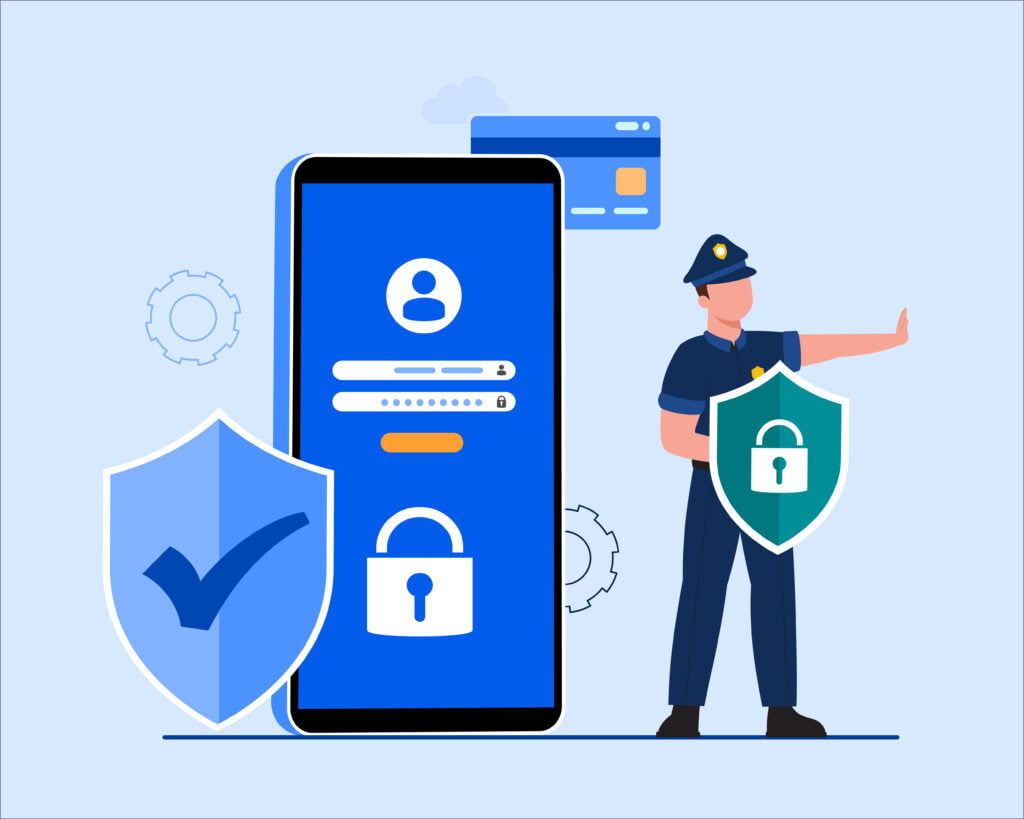MOBILE APPLICATION SECURITY

What is Mobile Application Security?
Mobile Application Security is the practice of protecting mobile apps from various threats and vulnerabilities. It encompasses a range of activities and measures to ensure the Confidentiality, Integrity, and Availability of the app’s data and functionality.
Why is Mobile Application Security Important for your Organization?
- Protects User Data and Privacy: Mitigates the risk of data breaches and unauthorized access to sensitive information.
- Enhances User Trust and Confidence: Demonstrates a commitment to user security, leading to increased trust and loyalty.
- Reduces Business Risks: Minimizes financial losses and reputational damage from cyberattacks.
- Ensures App Functionality and Availability: Protects the app from being compromised or disabled by attackers.
- Reduced Development Costs: Early identification and fixing of security issues during development saves time and resources compared to addressing them later.
- Improved Maintainability: Secure code is easier to maintain and update, reducing long-term costs and development effort.
- Enhanced App Stability: Secure code is less prone to crashes and errors, leading to a more stable and reliable app experience.


Why is Mobile Application Security Important for your Organization?
- Protects User Data and Privacy: Mitigates the risk of data breaches and unauthorized access to sensitive information.
- Enhances User Trust and Confidence: Demonstrates a commitment to user security, leading to increased trust and loyalty.
- Reduces Business Risks: Minimizes financial losses and reputational damage from cyberattacks.
- Ensures App Functionality and Availability: Protects the app from being compromised or disabled by attackers.
- Reduced Development Costs: Early identification and fixing of security issues during development saves time and resources compared to addressing them later.
- Improved Maintainability: Secure code is easier to maintain and update, reducing long-term costs and development effort.
- Enhanced App Stability: Secure code is less prone to crashes and errors, leading to a more stable and reliable app experience.
Our Approach
1. Secure Development Lifecycle (SDLC):
- Integration from the Start: Security shouldn't be an afterthought. It should be embedded throughout the entire development lifecycle, from planning and design to coding, testing, deployment, and maintenance.
- Security Requirements Definition: Clearly define security requirements for your app early on. This includes aspects like data encryption, authentication protocols, and secure coding practices.
- Threat Modeling: Proactively identify potential security threats and vulnerabilities your app might face. This helps prioritize security efforts and guide secure development practices.
- Secure Coding Practices: Developers should follow secure coding guidelines to minimize the introduction of vulnerabilities during development. This might involve using secure coding libraries and avoiding common coding pitfalls.
2. Mobile Application Security Testing (MAST):
- Static Analysis: Analyze the app's source code to identify potential vulnerabilities like insecure data storage or weak encryption practices. Static analysis tools can automate this process.
- Dynamic Analysis: Test the app while it's running to simulate real-world attack scenarios. This helps uncover vulnerabilities that static analysis might miss, such as injection flaws or logic issues.
- Penetration Testing (Pen Testing): Simulate a targeted attack by ethical hackers to identify exploitable vulnerabilities in the app. Pen testing can be particularly effective in uncovering complex vulnerabilities.
3. Ongoing Monitoring and Maintenance:
- Patch Management: Regularly update your app with the latest security patches from developers. These patches address newly discovered vulnerabilities and ensure your app remains secure.
- App Store Security Reviews: Be prepared to address any security concerns raised during app store submission processes (e.g., Google Play Store, Apple App Store).
- Threat Intelligence: Stay informed about the latest mobile security threats and vulnerabilities. This allows you to proactively update your app's security posture to counter emerging threats.










